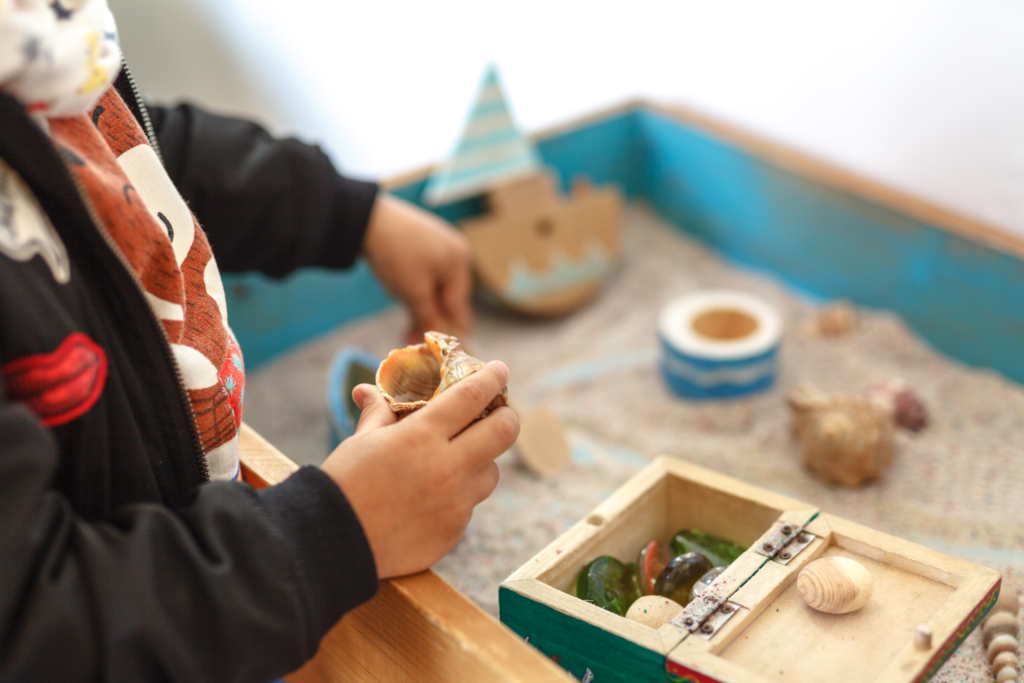Play is often seen by adults as a frivolous luxury of childhood. As a child therapist, I understand play is vital to a child’s social, emotional, and cognitive development. In an age of information and communication, we have become so accustomed to researching, talking, discussing and analyzing. But this is not the natural tendency of children. Children express themselves through their facial expressions, their bodies, their behaviors and especially through their play! I often have parents wonder about the productivity of their child’s therapy sessions because all we do is play. I explain, asking a child to simply sit on the couch and talk, is akin to asking a cat to bark. Gary Landreth, in his book, The Art of the Relationship, says, “in play therapy, toys are like a child’s words, and play is their language.” Through play, children are free to express themselves and to show me, without the constraints of words, what lies deep in their hearts.
In play therapy, toys are like a child's words and play is their language.
One little boy, named Billy, learned to deal with some very difficult emotions and gain a sense of freedom through his play. As I appeared in the doorway of the waiting room, Billy asked with an expectant look on his face “is it my turn?” I smiled and nodded. He ran over excitedly and we walked together to my office. Upon entering the room, Billy wasted no time in reaching for the polka-dotted box full of animal puppets off of the bookshelf. He balanced the box on his head as he hobbled over to the carpet. “I’m strong,” he told me as if sensing my desire to reach out and help him. He dumped the boxful of animals onto the carpet and searched for his favorite one. He dug through the pile of plush, grabbed a shabby brown dog from the bottom and paused to examine the shiny green sticker on the dog’s paw. Billy put that sticker on the dog in a previous session. He then gestured for me to pick one for myself. Following his lead, I too picked the same animal as last time, a light brown golden retriever puppet.
The stage was set. The characters cast. We both knew our parts because the play had been nearly the same for the past several weeks. Despite his initial excitement, Billy sat frozen and stared at the animals. The lines of uncertainty on his face could be read like sentences in a book. As he collected himself, he began to slowly act out his inner world. Themes of anger, fear and rejection began to unfold before my eyes. The animals joined together to form a club and purposefully excluded a large bird from the play. The bird, bright pink with lanky yellow legs, felt great rage. He began to break into the club, pulling members out and throwing them violently across the room.
All the animals ran to hide. All the animals cowered in fear, all the animals, but two. The shabby brown dog stepped up to help the other animals, aided by the golden retriever. Together the two unlikely heroes recovered the hurt animals and built a shelter to protect them, one that could not be penetrated by the angry bird. Toward the end of the session, I could sense that Billy was unable to resolve this inner conflict. In this play, he was both the hero and the bully. He did not know how to reconcile the two. Through the golden retriever puppet, I was able to make suggestions that would help the bird make amends with his friends. The bird listened and began to apologize to other animals and say, “I was just so angry because you wouldn’t let me play.”
Billy was an angry AND scared little boy. He acted out with aggression in the real world because he felt so little control in his own. During sessions he was learning to master difficult feelings and express them in more adaptive ways. Billy, just like all children, used this powerful medium to communicate the pain of rejection, the shame of his aggression and to integrate these emotional experiences. How fortunate I am to have been a witness and an aid in this process.






